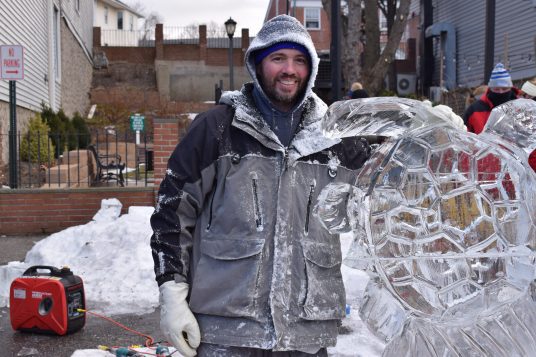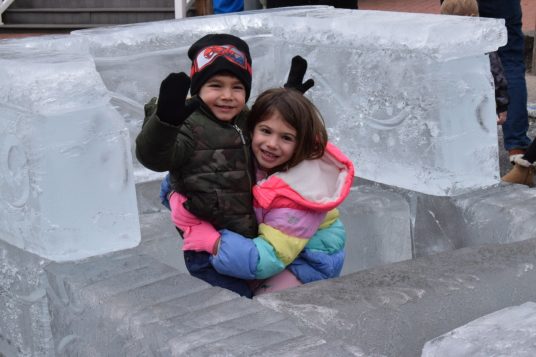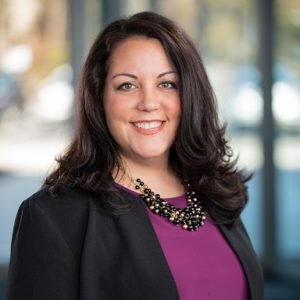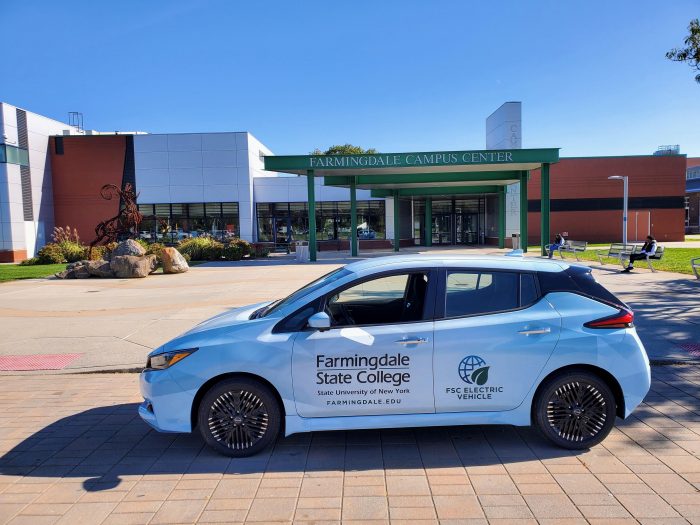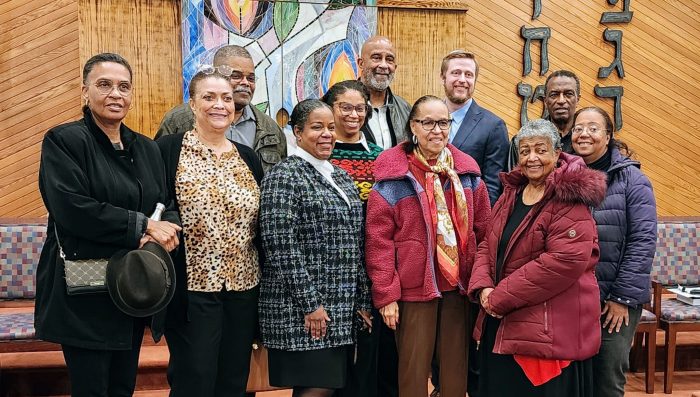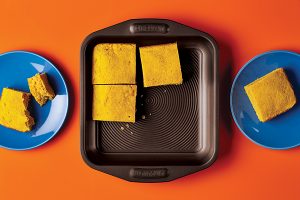By Daniel Dunaief
Hollywood is not the only place fascinated with the birth of stars. Indeed, researchers at Stony Brook University, among many other academic institutions, have focused considerable time, energy and effort into understanding the processes that lead to the creation of stars.
Astronomers had tried, unsuccessfully, to detect molecular clouds in the galaxy outskirts, which is how stars form in the inner part of galaxies.
About 18 years ago, a NASA satellite called GALEX discovered numerous newly formed stars at the edges of a spiral galaxy M83, which is 15 million light years from Earth.
Leading an international team of scientists, Jin Koda, Professor in the Department of Physics and Astronomy at Stony Brook University, together with his former undergraduate student Amanda Lee, put together data and information from a host of sources to describe how these stars on the outer edge of the galaxy formed.
Their work demonstrated star-forming molecular clouds in this outer area for the first time.
“These molecular clouds at the galaxy edge are forming stars as much as the molecular clouds in normal parts of galaxies” such as molecular clouds around the sun, Koda explained.
Before their discovery, Koda said astronomers had considered that new-born stars at galaxy edges could have formed without molecular clouds.
Koda recently presented this work at the 243rd annual meeting of the American Astronomical Society in New Orleans.
Indeed, partnering with scientists from the United States, Japan, France and Chile, Koda, who is the Principal Investigator on the study, and Lee found evidence of 23 of these molecular clouds on the outskirts of the M83 galaxy.
Combining data from a host of telescopes for this research, Koda and Lee found “higher resolution than before,” Lee said. “We could see a peak of atomic hydrogen in that region, which we didn’t know before.”
While helium also exists in the molecular clouds in the galaxy edges as well as in the atomic gas and in stars, it does not emit light when it’s cold, which makes its signature harder to detect.
Scientists are interested in “why we weren’t able to detect these molecular clouds for such a long time,” Lee said. “We ended up using a different tracer than what is normally used.”
The group came up with a hypothesis for why the molecular clouds were difficult to find. Carbon monoxide, which typically helps in the search for such clouds, is dissociated in the large envelopes at the galaxy edges. Only the cores maintain and emit this gas.
A collaboration begins
When Lee, who grew up in Queens, started at Stony Brook University, she intended to major in physics. In her sophomore year, she took an astronomy class that Koda taught.
“I was very interested in studying galaxies and the evolution of galaxies,” Lee said.
After the course ended, she started working in Koda’s lab.
“Her tireless efforts made her stand out,” Koda explained in an email. Koda appreciates how speaking with students like Lee helps him think about his research results.
Lee is “particularly good at identifying and asking very fundamental questions,” he added.
At one point about two years before she graduated in 2022, Lee recalled how Koda shared a picture of M83 and described the mystery of star formation at the outskirts of galaxies.
Two years later, by delving into the data under Koda’s supervision, she helped solve that mystery.
“I didn’t know my work would end up contributing to this project,” Lee said. “It’s really exciting that I was able to contribute to the big picture of star formation” in distant galaxies.
Since graduating from Stony Brook, Lee has been a PhD student for the last year and a half at the University of Massachusetts at Amherst.
At this point, Lee is still working towards publishing a paper on some of the work she did in Koda’s lab that explores the formation of stars in the inner disk of M83.
“Broadly,” she said, the two research efforts are “all related to the same picture.”
For her part, Lee was pleased with the opportunity to work with such a geographically diverse team who are all contributing to the goal of understanding star formation.
Future focus
The area they observed is relatively small and they would like to see more regions in M83 and other galaxies, Koda explained.
Finding so many molecular clouds at once in the small region “encourages us to hypothesize that the process is universal,” although scientists need to verify this, Koda said.
The researchers also discovered more atomic gas than they would expect for the amount of molecular clouds. A compelling discovery, this observation raised questions about why this abundant atomic gas wasn’t becoming molecular clouds efficiently.
“We need to solve this mystery in future research,” Koda explained. He is pleased with the level of collaboration among the scientists. “It’s very interesting and stimulating to collaborate with the excellent people of the world,” he said.
A resident of Huntington, Koda grew up in Tokyo, where he earned his bachelor’s, master’s and PhD degrees. When he moved to the United States, Koda conducted post doctoral studies for six years at Cal Tech.
About 15 years ago, he moved to Stony Brook, where he replaced Professor Phil Solomon, who was one of the pioneers of molecular cloud studies in the Milky Way galaxy.
Science appeals to Koda because he is “interested in how things work, especially how nature works,” he said.
In this work, Koda suggested that the molecular clouds have the same mass distribution as molecular clouds in the Milky Way, indicating that star formation is the same, or at least similar, between the Milky Way and galaxy edges.
Koda made the discovery of the molecular clouds and the hypothesis about the carbon monoxide deficient cloud envelope in 2022. Since then, he and his team have obtained new observations that confirmed that what they found were the “hearts of molecular clouds,” he said.



